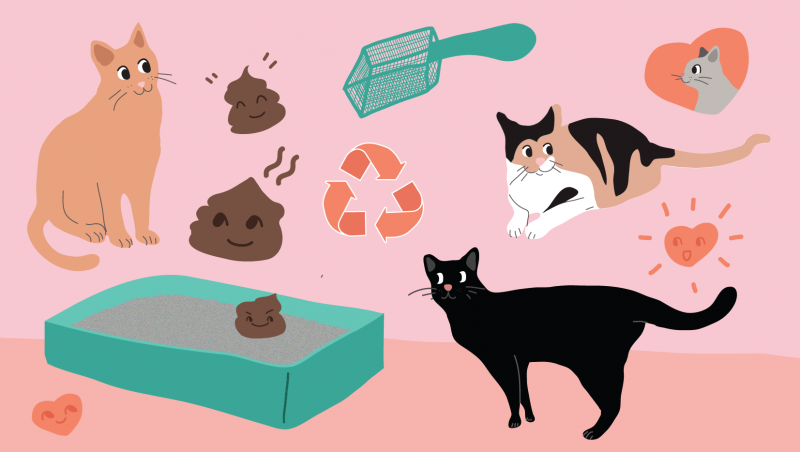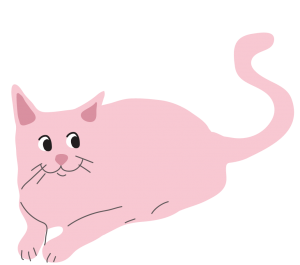As you probably know by now, the cat-human hybrids from the Cats movie don’t have buttholes. Like many people out there, I find this information to be profoundly disturbing, and could have gone my entire life without pondering how a furrified James Corden goes to the bathroom. But I didn’t come here to talk about Cats, the movie, or to make friends. I came to talk about kitty litter, goddamnit.
Unlike Taylor Swift’s Garfield cosplay, real cats do have buttholes and they use them to poop (take notes, Hollywood). I know this because I currently live with three cats, all of whom regularly shit in my house. Through much trial and error, I have developed a system that meets all of my targets when it comes to this: it’s good at controlling odour, it’s affordable, it’s healthier and it’s (relatively) environmentally friendly. So, although you most certainly didn’t ask for it, today you’ll be getting the inside scoop on exactly what this system entails.
The litter
The litter of choice for most cat owners is made of clay. Usually about $1.25/kg*, this route can be cost effective. However, it does involve some cons: it’s heavy, the little bits of clay get everywhere, it’s not great at controlling odours, it’s harmful to the environment and it kicks up an enormous amount of dust. As someone with chronic asthma, I noticed a significant improvement in my breathing after I got rid of this stuff.
I’ve also experimented with the use of silica crystal litter, which is made from granules of sodium silicate, similar to the stuff inside those “Do Not Eat” packages you might find in a new purse. While this method is much better at hiding smells and doesn’t produce dust, it’s significantly more expensive at around $4.5 per kg.
The third type of litter I’ve tried is made from wood pellets, which I use today and will likely use forever. The highly-absorbent (and biodegradable) pellets turn to sawdust when they come into contact with liquid, so the soiled bits are easy to seperate from the rest. They also do an amazing job at concealing odours, so rather than smelling like the inside of a zoo enclosure, my home now smells faintly like a freshly cut pine tree. The best part, however, is the low price point: at about $1/kg, it’s even cheaper than clay!
*All litter prices are pulled from the Mondou website.
The litter box (a.k.a. Defecation Station)
The general consensus for the replacement of plastic litter boxes is once a year. Your cat’s digging and scratching cause the plastic to wear out over time, meaning it’s easier for gross smells and bacteria to become trapped within. The result? Over your cat’s lifetime, you’re going through a lot of plastic and a lot of cash.
An alternative I like to use is litter boxes made from stainless-steel. This method is much more hygenic and durable, so you save money in the long run. That said, the cost of the initial purchase can run up to $80.* One tip I picked up from Reddit is to buy stainless steel steam pans instead (the kind you might see at a hotel buffet). I got mine for about $35 and it works great. Just make sure to tape up the edges since they can be a bit sharp.
*All litter box prices pulled from Amazon.
The waste disposal
For a long time, I had no clue how to dispose of the cat waste itself. I tried flushing it down the toilet, but it turns out this is really hard on the pipes. Plus, flushing cat poop can introduce a parasite called toxoplasma to the water. This has the potential to harm aquatic life as well as humans, as the parasite is difficult to filter from our water supply.
Next, I tried tossing the waste directly into the trash can. This was a huge no-go, as the smells added up quickly and I was forced to take out the trash nearly every other day. I also tried putting the waste into biodegradable doggie bags before tossing it, which helped a little, but still wasn’t ideal.
The solution that has worked best for me so far is the LitterLocker, which I picked up for about $17 at Walmart. The lid design seals the waste away after it’s been disposed of, so it does an amazing job at controlling odours. The biggest downside, however, is its use of plastic bags. While one refill of bags lasts a surprisingly long time, I’m still on the lookout for a more ecological and economical alternative, so stay tuned!
While it’s certainly not a glamorous topic, developing an effective system for cat poop is essential when it comes to the health and happiness of you and your pet. Thankfully, it doesn’t have to be expensive, it doesn’t have to be harmful to the earth and, above all else, it doesn’t have to be smelly.
Graphic by @sundaeghost






